Pre-School
We are excited to announce that in September 2024, our new Clifton-upon-Dunsmore Church of England Pre-School will be opening for children aged 3 and 4 years old.
Our Intent is that children attending our Pre-School will develop a love of learning, foster lasting friendships and flourish in an enviornment where they feel safe and secure. Our Christian ethos will be woven through all areas of the Pre-School in order that children and their families feel that they are part of our whole school community and an integral part of our Early Years Provision.
'With open minds and loving hearts, we will achieve.'


Please click on our Pre-School Admissions Policy for further information.
Pre-School_Admissions_Policy_2024-25.pdf
Home School Agreement 2024-2025.pdf
For information on how to access your funded early education place - click on the following link for guidance.
Parent Information leaflet WCCC-505288705-216.pdf
Pre-School Enquiries
Please send enquiries to our Pre-School email address on: PreSchoolAdmin3177@welearn365.com or complete the form below.
If you wish to register your interest in applying for a place for your child in our Pre-School or to join our Wait List, please complete the form below. Please note you will need to complete the "I am not a Robot" question too. If the form does not submit, please check the dob is in the correct format DD/MM/YYYY.
I CAN’T UNDERSTAND MY CHILD! Tips For Helping Your Child With Speech Clarity
Sound familiar? Or maybe YOU can understand your child but no one else can. Also very common! Speaking clearly takes a lot of brain power, and a lot of coordination. Think about it, every time you want to say something, your brain has to think of the words, think of how to put the words together, then your brain has to tell your lips and tongue where to go and how to move for EVERY SOUND! It is complex, and as adults, we take it for granted. When young children learn to talk, speech clarity often takes a back seat. When children’s sounds develop, omissions, substitutions or inconsistent productions are common.
Before 3 years of age, the following sound errors or patterns are very common.
- Deleting final consonants (e.g., “ha” for “hat”)
- Deleting the unstressed syllable (e.g. “nana” for “banana”)
- Consonant Assimilation (e.g., “tat” for “cat”)
- Repeating sounds or syllables (e.g. “baba” for “bottle”)
At 18 months of age you should be able to understand your child 25% of the time, at 2 years of age, 50-75% of the time, and at 3 years of age you should be able to understand your child 75-100% of the time.
Early 8 Sounds
Emerging development between ages 1-3 with consistent production ~3
/m/ as in “milk”
/b/ as in “baby”
/y/ as in “you”
/n/ as in “no”
/w/ as in “we”
/d/ as in “dada”
/p/ as in “pat”
/h/ at in “hi”
Middle 8 Sounds
Emerging Development Between ages 3-6 1⁄2 with Consistent production ~age51⁄2
/t/ as in “toe”
/ng/ as in “hopping”
/k/ as in “cup”
/g/ as in “go”
/f/ as in “fan”
/v/ as in “van”
/ch/ as in “chop”
/j/ as in “jump”
/s/ as in “see”
Late 8 Sounds
Emerging Development Between ages 5 -7 1⁄2 with Consistent production ~age71⁄2
/sh/ as in “shoe”
/th/ as in “think”
/th/ as in “that”
/r/ as in “red”
/z/ as in “zipper”
/l/ as in “lap”
“zh” as in “measure”
Tips for helping your child with speech clarity.
Below are some ideas on how you can help a child who has unclear speech. It will give you some general ideas before seeing a Speech Therapist.
- Get down to your child’s level, so your child can see your mouth. Visual models can reinforce how to properly say certain sounds.
- Speak in a slow but natural way so your child is encouraged to speak at the same rate. Speaking quickly requires more refined coordination.
- Instead of asking your child to repeat the word, model the word back emphasising the sound in error correctly (e.g., Your child says, “I want the big tar”, you can say, ”You want the big car?”.
- If you know your child can say the sound, you can give him/her choices(e.g. Do you want the “tar” or the “car”?) If they aren’t able to say the sound, offering choices would not be very helpful.
- If you have understood part of his sentence/conversation, repeat it back to him/her so he/she knows you have understood him. Building confidence is important so he/she keeps trying.
- Don’t’ pretend to understand but rather ask your child to “show you” what he/she wants.
- Use contextual and environmental cues as well as facial expressions and intontation to help you to figure out your child’s message.
- Promote good hearing. Good hearing is essential for the development of normal articulation. If you are concerned with your child’s articulation skills, it is always a good idea to have his/her hearing assessed.






